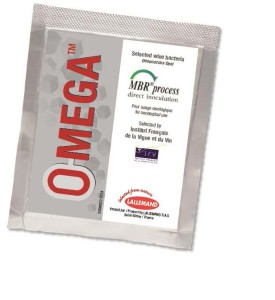Lalvin ICV OKAY- for young, fresh and aromatic rose, white and red wines
Winemaker and market needs, especially for bulk early released wine, focus on regular aromatic profile and analytical characteristics such as volatile acidity, SO2, level, sulfur compounds, etc…
In order to respond to such demand, Lallemand and ICV have selected with collaboration of INRA and Sup’ Agro Montpellier, Lalvin ICV OKAY® for its special ability to avoid SO2 and negative sulfur compounds production, with the security to complete rapid alcoholic fermentation in a large range of winemaking conditions.
Moreover the low acetaldehyde production of Lalvin ICV OKAY® will be a good asset to stabilize most of wines with moderate SO2 level.
Adapted to fresh aromatic rose, white and red wines usually obtained in low temperature and NTU conditions, Lalvin ICV OKAY® produces very low level of volatile acidity.
Lalvin ICV OKAY® selection has been the aim of a PhD. related to Identification of a new mechanism responsible for the control of SO2 and H2S production.
See Lalvin ICV OKAY® in our catalogue !
O-MEGA™: much more than a New Wine Bacteria, a strong ally for malolactic fermentation
 The Institut Français de la Vigne et du Vin (IFV), in partnership with Lallemand Oenology, has selected, over a four-year period, a new wine bacteria – O-MEGA™ – that is both vigorous and versatile and brings fruity freshness to white, rosé and red wines.
The Institut Français de la Vigne et du Vin (IFV), in partnership with Lallemand Oenology, has selected, over a four-year period, a new wine bacteria – O-MEGA™ – that is both vigorous and versatile and brings fruity freshness to white, rosé and red wines.
The O-MEGA™ wine bacteria can be inoculated into wine without rehydration, and is very easily implanted no matter when it is added (in co-inoculation, early inoculation or sequential inoculation), to conduct malolactic fermentation (MLF) in a short time – even in difficult conditions. Inoculation with O-MEGA™ is very simple, as confirmed by numerous winery trials that show its remarkable resistance in a wide range of uses, with white, rosé and red wines:
– pH ≥3.1
– Degree of alcohol <16%/vol, even 17%/vol if the other factors are not limiting
– Total SO2 <60 mg/L, free SO2 10 mg/L
– Temperature >15°C
When O-MEGA™ was characterized in greater detail, it revealed properties that go well beyond deacidification:
– Good resistance to polyphenols, which lets O-MEGA™ be effective in varietals where MLF can be difficult, like Merlot and Tannat
– Weak degradation of acetaldehyde during and after MLF, which permits better colour stabilization in red and rosé wines
– An ability to degrade both high levels of malic acid (6 g/L) and lower levels (1 g/L)
– Does not metabolize the precursors to hydroxycinnamic acid in grapes, which are the precursors to Brettanomyces for producing the ethyl and vinyl phenols responsible, for undesirable tastes in the wines
– Low production of volatile acidity
– This new wine bacteria selection also offers major sensory advantages, such as very low diacetyl production (milky and buttery notes), and helps develop wines with freshness and aroma complexity, while reinforcing their fruity character
For further information, read the scientific article “Managing wine quality with a newly selected, robust and original wine bacteria“
